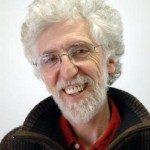Link to Pubmed [PMID] – 26166067
Biochimie. 2015 Nov;118:313-21. doi: 10.1016/j.biochi.2015.07.008. Epub 2015 Jul 10.
The genomes of the 21 completely sequenced Thermococcales display a characteristic high level of rearrangements. As a result, the prediction of their origin and termination of replication on the sole basis of chromosomal DNA composition or skew is inoperative. Using a different approach based on biologically relevant sequences, we were able to determine oriC position in all 21 genomes. The position of dif, the site where chromosome dimers are resolved before DNA segregation could be predicted in 19 genomes. Computation of the core genome uncovered a number of essential gene clusters with a remarkably stable chromosomal position across species, in sharp contrast with the scrambled nature of their genomes. The active chromosomal reorganization of numerous genes acquired by horizontal transfer, mainly from mobile elements, could explain this phenomenon.
